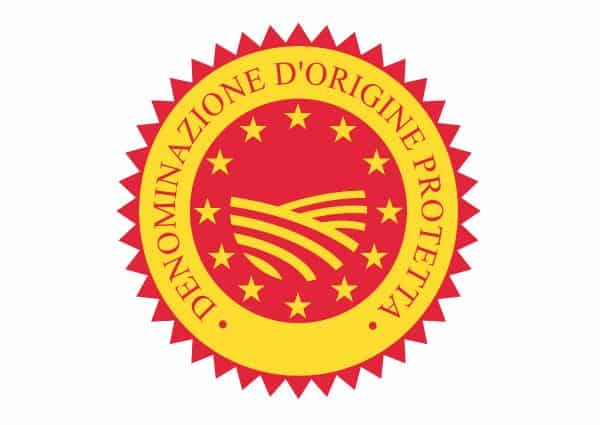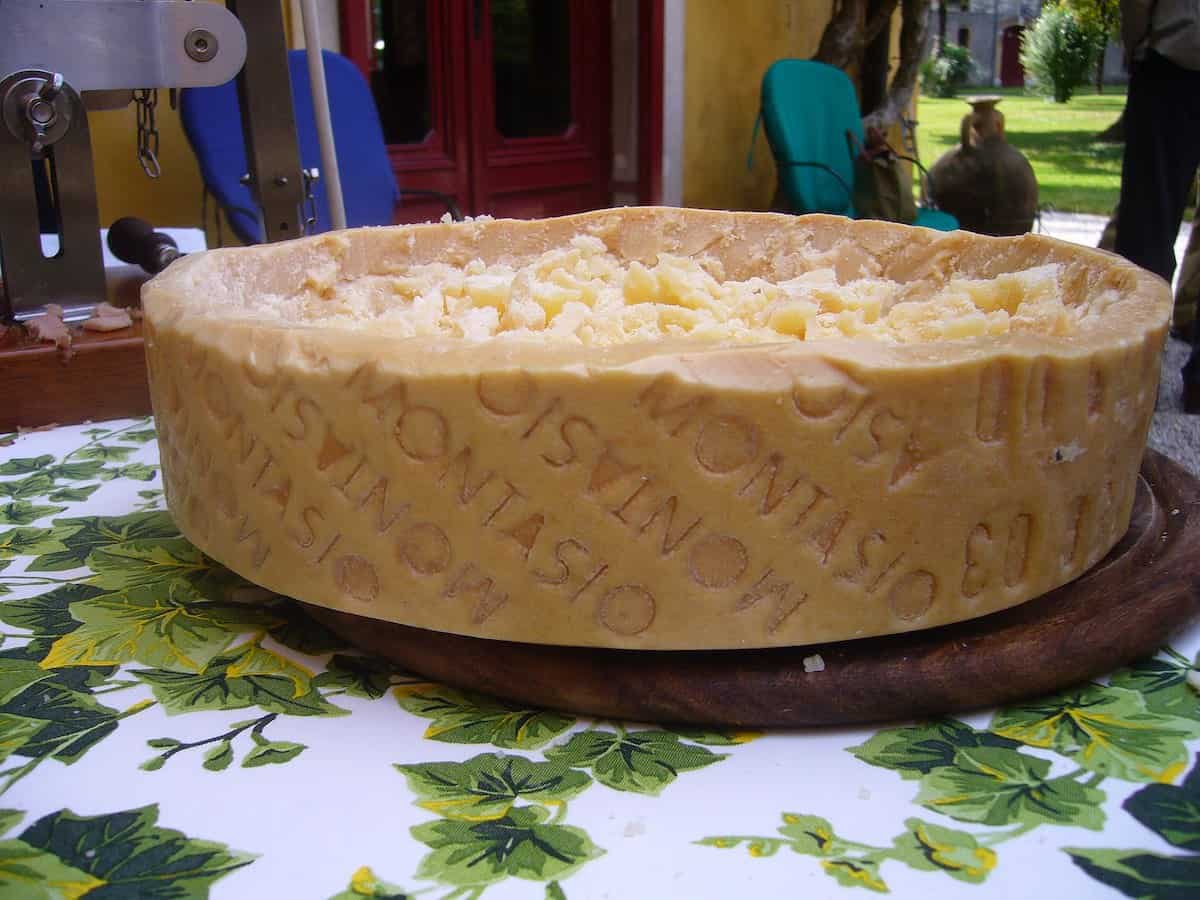Five Great Northern Italian Cheeses Make A Perfect Aperitivo

If you have a passion for cheese, you’ll want to savor some great northern Italian cheeses.
The six types of cheese described below, all hard or semi-hard cheeses, have earned the PDO (Protected Designation of Origin) trademark from the European Union attesting to their quality: Grana Padano PDO, Parmigiano Reggiano PDO, Piave PDO, Asiago Fresco PDO and Asiago Stagionato PDO, and Montasio PDO.
In general, cheese is a versatile food product that can be served before dinner on its own; as an accompaniment or ingredient of main dishes; grated over soups, salads, pasta or rice; or as a dessert course, often paired with fruit.
Why choose PDO cheeses?

When people buy cheese, there are so many different options, some produced domestically and others imported, but it’s nearly impossible to know the quality of what you are buying. Many copycat cheeses continue to flood the market (e.g. If you see anything labeled parmesan, beware.)
The PDO mark (in Italian, DOP, Denominazione di Origine Protetta) assures the quality of Italian cheeses in several respects. This European Union (EU) imprimatur attests that the production of these cheeses is regulated by Italian and EU laws requiring the milk products to come from a specific geographic area. They offer a true sense of place.
Moreover, the PDO mark assures that the producers respect traditional production and processing methods that have been passed down from generation to generation. You can view the full list of Italian PDO cheeses here.
Six excellent PDO cheeses from Northern Italy
Grana Padano PDO

Grana Padano is a hard, semi-fat cheese with a granular texture and mild but savory aroma that is popular both as a table cheese, grated over pasta or risotto, or as an ingredient in many recipes.
It has a white or pale yellow color and comes enclosed in a dark yellow rind. It bears some similarities to Parmigiano Reggiano PDO but is generally considered to taste a little less nutty and salty; it is also less costly.
Aged for an average of 16 months, Grana Padano PDO is produced in the area around the Po Valley, north of the Po river from Piedmont to Veneto to Emilia Romagna. The Grana Padano offering the richest, fullest flavor is Riserva, which is aged over 20 months.
The rules for the production of this raw milk cheese (and all other PDO cheeses) are strict. For example, they include:
- never milking the cows more than twice a day and feeding them according to precise regulations;
- exclusive use of copper vats or vats with a copper lining, each producing two wheels of cheese;
- set heating temperatures and resting time in the vat, and
- use of a wooden paddle, called a schiavino, to lift the curd and separate it into two equal parts.
Parmigiano Reggiano PDO

Perhaps, the most popular and well-known of Italian cheeses, Parmigiano Reggiano PDO can only be produced in the provinces of Parma, Reggio Emilia, Modena and parts of Bologna in the Emilia Romagna region and parts of Mantua in the region of Lombardy.
The flaky cheese is popular as a snack, is used in many of the traditional pasta recipes from the Emilia Romagna region (including tortellini); grated over pasta, and in lasagna, meatballs and meatloaves.
Also produced with raw cows’ milk, Parmigiano Reggiano PDO is semi-fat cheese with a hard, finely granular texture. It is white or pale yellow in color with a natural pall-yellow rind. Its origins trace back to the Middle Ages and it still uses the same ingredients, is made in the same places, and uses the same production methods.
The regulations governing the production of Parmigiano Reggiano PDO are even stricter than those for Grana Padano PDO. Each wheel is branded with the month and year of its production, and the identification number of the cheese house making it.
Because the quality of the cheese depends on the length of its maturation, color codes are used to identify how long the cheese has been aged: red (over 18 months), silver (over 24 months), gold (called stravecchio, aged over 30 months) and bronze (aged over 36 months).
Piave PDO

Piave cheese comes only from Belluno, a mountainous province in the northeastern part of the Veneto region. Its name comes from the Piave river. The historic dairy farms are known as malghe but the cheese only took its name in 1960 and achieved PDO status in 2010.
Like Parmigiano Reggiano PDO, the flavor of Piave PDO changes and intensifies with age. There are five stages of aging: Fresco is the fresh form; Mezzano is medium; Vecchio is mature and Vecchio Selezione Ora (aged over 12 months) and Vecchio Reserva (aged over 18 months) are the two types of extra mature Piave PDO.
The cheese is hard, light in color, with the color trending toward ochre in the two most mature forms. The rind is soft and light in the fresh form and becomes thicker and harder with age. It is a pleasant nutty taste. Like other grating cheese, it becomes more meltable with maturity.
Piave PDO is popular breaded or melted over vegetables, as an ingredient in salads or grated over first courses and as an accompaniment to fruit compotes.
Asiago PDO

There are two major types of Asiago PDO, Alpine cheeses that became very popular in the US when they were brought here by Italian immigrants in the 1800s.
- Asiago Fresco is a semi-hard cheese with a white, slightly yellowish color and a thin flexible rind. Its taste is soft, delicate and milky. The cheese has marked, irregular eyes (round holes).
- Asiago Stagionato is a semi-fat hard cheese with a pale yellow color and eyes that are smaller and sparser. Depending on its age, it can be mild (Mezzano, aged between 4-6 months) or sharp (Vecchio (aged, 10-15 months), or even more intense (Stravecchio, aged for over 15 months).
Asiago PDO can be eaten on its own as an antipasto or served with cold cuts. It is also often enjoyed after dinner with fruits, honey, jam or chutneys.
Montasio PDO

Montasio PDO is also an Alpine cheese, produced in either the Friuli Venezia Giulia region (across the entire provinces of Udine, Pordenone, Gorizia and Trieste) or the northeast part of the Veneto region (in the entire provinces of Treviso and Belluno and parts of Venice and Padua).
The cheese is semi-hard with a white or pale yellow color, with regular, polished eyes and a light brown rind. This cheese, too, becomes more granular and meltable as it matures. There are four aging stages: Fresco, Mezzano, Stagionato and Stravecchio (aged for over 18 months).
Fresco and Mezzano Montasio PDO are often eaten on their own, served with breads and salads, or as an accompaniment to meats. The more mature versions are excellent for grating over pasta and soups. The cheese is also perfect for dessert, paired with fruits, jams and honey.
Assembling a northern Italian cheese board

One enjoyable way to savor a variety of cheeses is to invite family or friends to join you for aperitivi.
Cheese pairs perfectly with sparkling Prosecco, Franciacorta, or Lambrusco as well as still wines. A get-together over cheese and bubbly is informal but celebratory, doesn’t require much fuss, and serves as a natural springboard for conversation.
In Italy, the composition of cheese boards (taglieri) varies from region to region because they typically reflect local products and traditions. At your home, you can stick to the cheeses of one region or be creative, and show off the diversity of Italian food products. You can experiment with cheeses of different maturity.
Seasonal fruits and nuts are wonderful complements as are cold cuts. Set out some crackers and sliced bread as well.
Because these hard cheeses are hues of yellow, choose a platter or board of a contrasting color to serve them. If you have a slate cheese board, you can write the names of each cheese. If you prefer a wooden, granite or ceramic board, you can make labels on little flags with toothpicks and stick them into each cheese.
(A previous article on MoreTimeToTravel.com offers some additional hints on assembling a tagliere.)
France, Germany and Italy are the main cheese-producing countries in Europe. (Those countries, the Netherlands and Poland produce 70 percent of all European cheese.) If you aren’t already familiar with these products, selecting cheeses for a get-together can feel daunting. In fact, Italy alone boasts over 2500 varieties, more than 52 (PDO) protected by the EU.
I’ve found that if you stick to PDO cheeses, although a bit pricier, you’ll be assured of their quality and authenticity. A local cheesemonger can also help you select a variety of cheeses that will simultaneously stimulate your taste buds and please your guests!.
Disclosure: Cheeses of Europe provided us with samples of these cheeses. The Council’s Mission is to create awareness about the variety of the cheeses of Europe available on the US market. Any opinions expressed in this post are our own.
For Cheese Lovers Only!
Read my posts on how to create an Aost Valley Cheese Board and on Stracciatella Cheese from Puglia:





